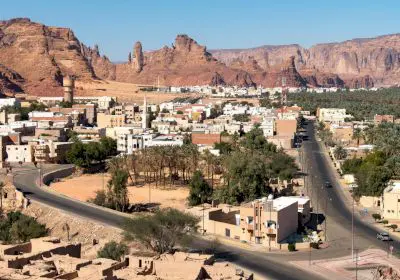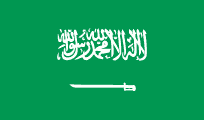Saudi Arabia, the largest Arab economy and the economic hub of the Persian Gulf, is governed by Oil revenues and is the largest producer of the Organization of Petroleum Exporting Countries (OPEC)

Saudi Arabia is known for its abundant reserves of oil, which has played a crucial role in shaping its economy and global energy markets. The country possesses one of the largest oil reserves in the world, and oil production and exports have been the primary drivers of its economy for decades. The Petroleum industry in Saudi arabia is managed by the national oil company, Saudi Aramco, which is one of the largest oil companies globally. They oversee the exploration, production, refining, and export of oil and petroleum products. Saudi Arabia has significant oil fields, including the Ghawar Field, the largest conventional oil field in the world.
In terms of industries, Saudi Arabia has a thriving Petrochemical sector. It has invested heavily in the production of petrochemicals, such as plastics, fertilizers, and chemicals, leveraging its oil and gas resources. The country is one of the world's largest exporters of petrochemical products. Additionally, Saudi Arabia has a well-developed construction industry. The government has undertaken numerous infrastructure projects, including the construction of cities, roads, airports, and railways, to support economic diversification and enhance the country's infrastructure.
The agricultural sector in Saudi Arabia is also of significance. Despite its arid climate, the country has made significant progress in agricultural production through the use of advanced irrigation techniques and technology. The cultivation of crops, such as wheat, dates, vegetables, and fruits, is supported by large-scale farming operations and greenhouse cultivation. Furthermore, Saudi Arabia has a growing manufacturing sector, with a focus on industries like steel, aluminum, cement, and pharmaceuticals. The government has been encouraging the development of local industries and promoting industrialization through various initiatives.
The country is rich in natural resources such as Gold and copper, crude Oil, natural gas, and iron. However, in terms of forests and forest areas, deforestation and agriculture are poor. Most plants grow in oases. With more than 260 billion barrels of Oil, Saudi Arabia holds more than 14% of the reserves of this vital substance. This figure is equivalent to 33% of the total reserves of other member countries of the Organization of Petroleum Exporting Countries (OPEC). Saudi mines are mostly located in the Hejaz Mountains and the Asir region and the Najd region. The two industrial cities of Yanbu on the Red Sea coast and Al-Jubail on the Persian Gulf coast have been built to regulate the state of Saudi resources and mines.
Saudi Arabia's uranium mineral reserves are large enough to allow it to produce nuclear fuel without the need for imports. Saudi Arabia, the largest Arab economy and the economic hub of the Persian Gulf, is governed by Oil revenues and is the largest producer of the Organization of Petroleum Exporting Countries (OPEC). The country has reaped huge benefits from Oil exports (especially after the sudden rise in Oil prices in 1973-74).
Saudi Arabia uses Oil revenues to implement long-term plans for its economic infrastructure and the development of modernism, as well as health, social and educational development. A large part of the Saudi government's budget is allocated to the armed forces and the purchase of advanced weapons from abroad. Public employment and subsidies for production and consumption have also been part of the country's expenditures.
The largest economic sectors and the maintenance of a high standard of living depend entirely on government subsidies. Of course, borrowing from foreign banks has been on the agenda since the late 1980s, and the need for economic reform is felt at times when Oil prices are falling. The Saudi royal family favors a free, Western-leaning economy. It relies on Western and Japanese investments in many economic sectors, especially Oil.
Therefore, in many economic sectors, Western management has a significant share. But at the same time, the share of the Saud tribe, especially in the Oil and gas industry, has been increasing in recent years. Most of Saudi Arabia's workforce is foreign. In recent years, Saudi Arabia's economic structure has been based on Oil conversion and refining industries, as well as non-Oil exports, and long-term plans have been drawn up.
Industry of Saudi Arabia
Saudi Arabia has increased its share of crude Oil revenues in the development of industrial projects. Saudi Arabia's industrialization program focuses on building Oil and gas refineries. At the end of 2005, Saudi Arabia estimated its proven gas reserves at 1.2 trillion cubic meters, ranking fourth in the world.
The country's proven Oil reserves are estimated at 7 billion barrels. The main projects are being implemented under cooperation agreements between the government and foreign companies. The share of manufacturing factories in GDP in 2004 was 94,962 million rials and the average annual production between the years 2004-2009 was 4.8 percent. Manufacturing plants, which accounted for 9.5 percent of GDP in 2005, have invested more than $ 66,000 million since the mid-1980s.
In recent years, Saudi Arabia has taken steps to diversify its economy and reduce its dependence on oil. The government has been implementing a strategy called Vision 2030, which aims to develop other sectors such as tourism, entertainment, manufacturing, and technology. This diversification effort includes the establishment of economic zones and the promotion of foreign investment. Apart from oil, Saudi Arabia has other valuable natural resources. It has substantial reserves of natural gas, which are being increasingly utilized for domestic consumption and export. The country also has significant mineral resources, including bauxite, gold, copper, phosphate, and zinc.






